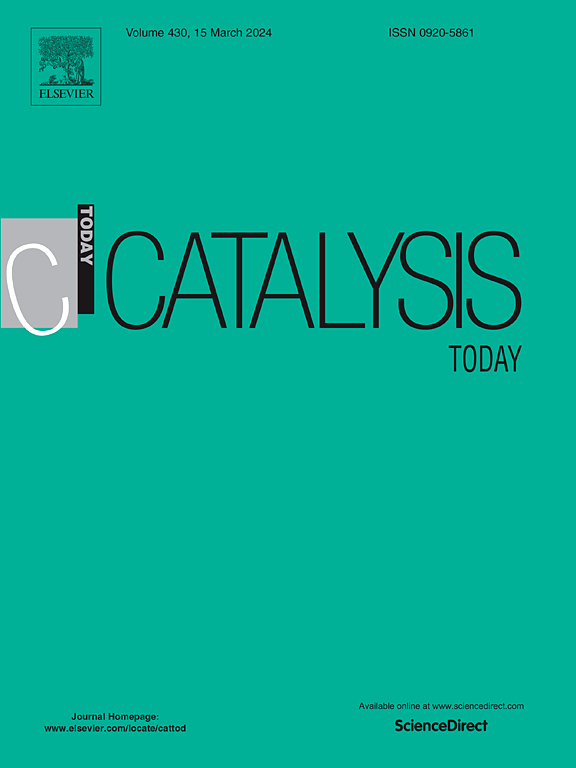Photoelectrochemical and photocatalytic activity of photodeposition-functionalized Ag/TiO2 and MnOx/TiO2 thin films
IF 5.3
2区 化学
Q1 CHEMISTRY, APPLIED
引用次数: 0
Abstract
This study investigates the impact of UV-assisted photodeposition functionalization on the photoelectrochemical (PEC) and photocatalytic oxidation (PCO) performance of sol–gel derived TiO2 thin films deposited onto ITO-coated glass substrates. Ag and MnOx species were photodeposited at varying UV irradiation doses () in the 0 – 10 J cm−2 range, and their effects on film properties were evaluated through photoelectrochemical (PEC) measurements, and Methylene blue photocatalytic oxidation (PCO) screening. Results revealed that both Ag and MnOx functionalization exhibit an optimal that maximizes PEC performance, with the Ag/TiO2 photoanode at = 5 J cm−2 achieving a ∼20 % increase in photocurrent density compared to pristine TiO2. Conversely, MnOx functionalization consistently inhibited PEC and PCO activity, particularly at higher . Mott–Schottky and EIS analyses confirmed improved charge separation and reduced charge-transfer resistance in optimally functionalized samples. Photodeposition-functionalized photoanodes outperformed dark-functionalized (0 J cm−2) ones, underscoring UV-assisted photodeposition as a flexible and effective surface modification strategy.
光沉积功能化Ag/TiO2和MnOx/TiO2薄膜的光电化学和光催化活性
本文研究了紫外辅助光沉积功能化对沉积在ito涂层玻璃衬底上的溶胶-凝胶型TiO2薄膜的光电化学(PEC)和光催化氧化(PCO)性能的影响。在0 ~ 10 J cm−2的不同紫外照射剂量(DUV)下进行了Ag和MnOx的光沉积,并通过光电化学(PEC)测量和亚甲基蓝光催化氧化(PCO)筛选评价了它们对膜性能的影响。结果表明,Ag和MnOx功能化都表现出最大化PEC性能的最佳DUV,与原始TiO2相比,Ag/TiO2光阳极在DUV = 5 J cm−2时实现了约20%的光电流密度增加。相反,MnOx功能化持续抑制PEC和PCO活性,特别是在较高DUV下。Mott-Schottky和EIS分析证实了优化功能化样品中改进的电荷分离和降低的电荷转移电阻。光沉积功能化的光阳极优于暗功能化(0 J cm−2)的光阳极,强调了紫外光辅助光沉积是一种灵活有效的表面改性策略。
本文章由计算机程序翻译,如有差异,请以英文原文为准。
求助全文
约1分钟内获得全文
求助全文
来源期刊

Catalysis Today
化学-工程:化工
CiteScore
11.50
自引率
3.80%
发文量
573
审稿时长
2.9 months
期刊介绍:
Catalysis Today focuses on the rapid publication of original invited papers devoted to currently important topics in catalysis and related subjects. The journal only publishes special issues (Proposing a Catalysis Today Special Issue), each of which is supervised by Guest Editors who recruit individual papers and oversee the peer review process. Catalysis Today offers researchers in the field of catalysis in-depth overviews of topical issues.
Both fundamental and applied aspects of catalysis are covered. Subjects such as catalysis of immobilized organometallic and biocatalytic systems are welcome. Subjects related to catalysis such as experimental techniques, adsorption, process technology, synthesis, in situ characterization, computational, theoretical modeling, imaging and others are included if there is a clear relationship to catalysis.
 求助内容:
求助内容: 应助结果提醒方式:
应助结果提醒方式:


